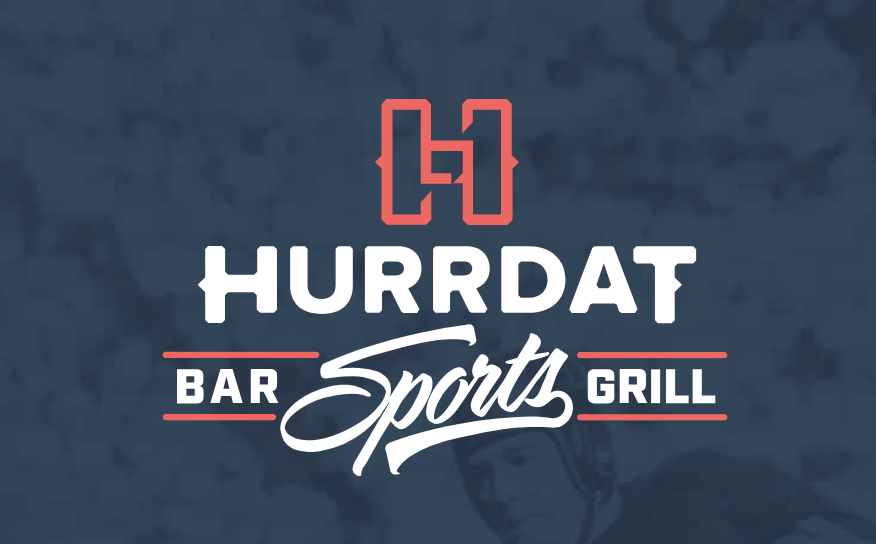Discover everything an entrepreneur needs to know about small business marketing below.
- What Is Small Business Marketing?
- Why Is Small Business Marketing Important?
- What Are the Challenges of Small Business Marketing?
- How Do I Start Marketing My Small Business?
What Is Small Business Marketing?
Small business marketing is the process of getting your business seen by more consumers and attracting new people to your audience through blogging, email, social media, local SEO, paid ads, website optimization, and traditional marketing methods.
Small business owners can get started with small business marketing by first understanding their target market and tailoring their messaging to those customers.
Why Is Small Business Marketing Important?
Small business marketing is important because it’s the only sustainable way to attract customers and run a successful business long-term. Small business owners need to pay attention to their marketing because it’s one of the top reasons why new businesses fail.
What Are the Challenges of Small Business Marketing?
Small business marketing comes with many challenges, like smaller budgets, slimmer teams, zero free time, and larger competition. Below are the four main hurdles that small business owners face when they bootstrap their marketing efforts and how you can overcome them.
1. Lack of Resources
Unlike larger companies, your business probably doesn’t have a large staff (let alone a marketing team), a hefty advertising budget, multiple locations, or endless time. Because of these constraints, it can be harder for small businesses to serve as many customers or market as effectively.
If your budget and/or team is limited, use free marketing tools for your small business and automation. This saves you from having to hire more staff or spend more money, since AI and software can help your company streamline the content creation and marketing processes without human intervention.
If your team and/or time is limited, hire a marketing agency that specializes in local business marketing to free up your schedule, all while executing your vision at an expert level.
2. Competition
It’s possible for you to go up against similar small businesses in your area, but if you’re in an industry that’s dominated by large companies, it’ll always feel like a losing battle. This double-edged competition can result in an oversaturated market where it’s hard for your business to stand out.
Rather than fighting in highly competitive arenas that reward big businesses, look for easy wins in spaces designed for smaller companies—like local SEO, which suggests businesses based on relevance and proximity to customers rather than ad spend or brand recognition.
Another solution is to nail your unique branding and business story early on. No two brands are exactly alike, so focus on what sets you apart from your competitors and use the people behind your operations to connect with more customers.
3. Fast-Moving Digital Marketing Trends
Keeping up with the ever-changing digital marketing landscape takes time that you might not have if you’re already busy running a small business. And even if you are up-to-date on all the changes, knowing how best to adapt takes marketing expertise that many business owners don’t hold.
One way to get past the trends is to keep your content evergreen, avoiding anything that could quickly date your content so it can stay relevant longer. Small business owners might also subscribe to marketing newsletters—like Hubspot, Search Engine Journal, or Search Engine Roundtable—to receive marketing updates straight from the experts.
4. Delayed Results
People need to see your brand at least seven times before making a purchase decision, so it can take months (if ever) before your readers and followers turn into paying customers, especially if you’re relying on organic marketing strategies. And even though paid marketing gets quicker results, it can drain your budget quickly and isn’t a long-term solution.
To help with this, pair your organic marketing strategy with your paid marketing strategy. This’ll give your organic marketing strategy time to get off its feet while your paid marketing strategy does the initial legwork. Once your organic marketing channels have traction, you can cut down on your paid marketing channels to save your budget.
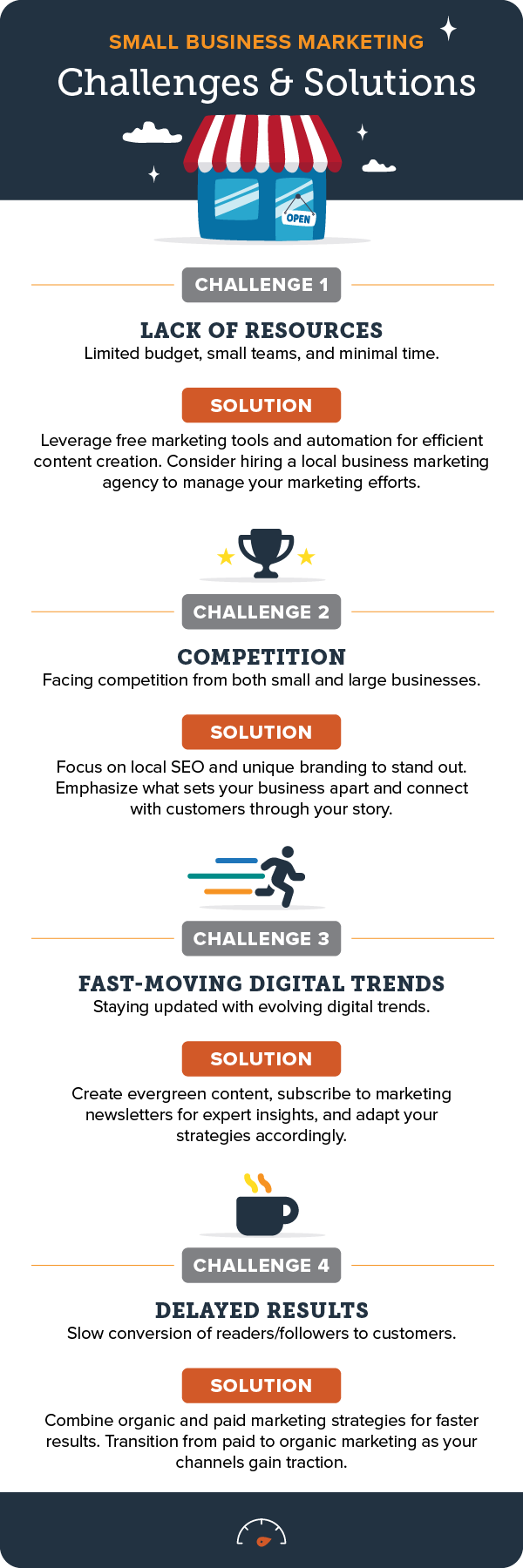
How Do I Start Marketing My Small Business?
Here’s everything you need to do to create and execute your small business marketing strategy like a pro:
- Define Your Marketing Goals
- Identify Your Audience
- Choose the Right Marketing Channels
- Decide Your Marketing Budget
- Develop Your Branding
- Claim & Set Up Local Business Listings
- Leverage Social Media
- Build a Website
- Remember Traditional Marketing
- Grow Your Email List
- Consider Paid Advertising
- Scale Your Marketing
- Track Your Success
Define Your Marketing Goals
If you don’t have a goal in mind, how will you measure success? Lay out what you’d like to achieve with your marketing efforts—whether that’s more people exploring your website, signing up for your newsletter, making a purchase, or another action that’ll impact your bottom dollar. Here are some common marketing goals for beginners:
- Increase brand engagement
- Increase brand awareness
- Get new customers
- Boost revenue/sales
- Establish consistent website traffic
For Hurrdat Sports Bar & Grill (formerly Hail Varsity Club), the goal was to gain traction for a strong initial opening by increasing brand awareness and promoting upcoming in-house events.
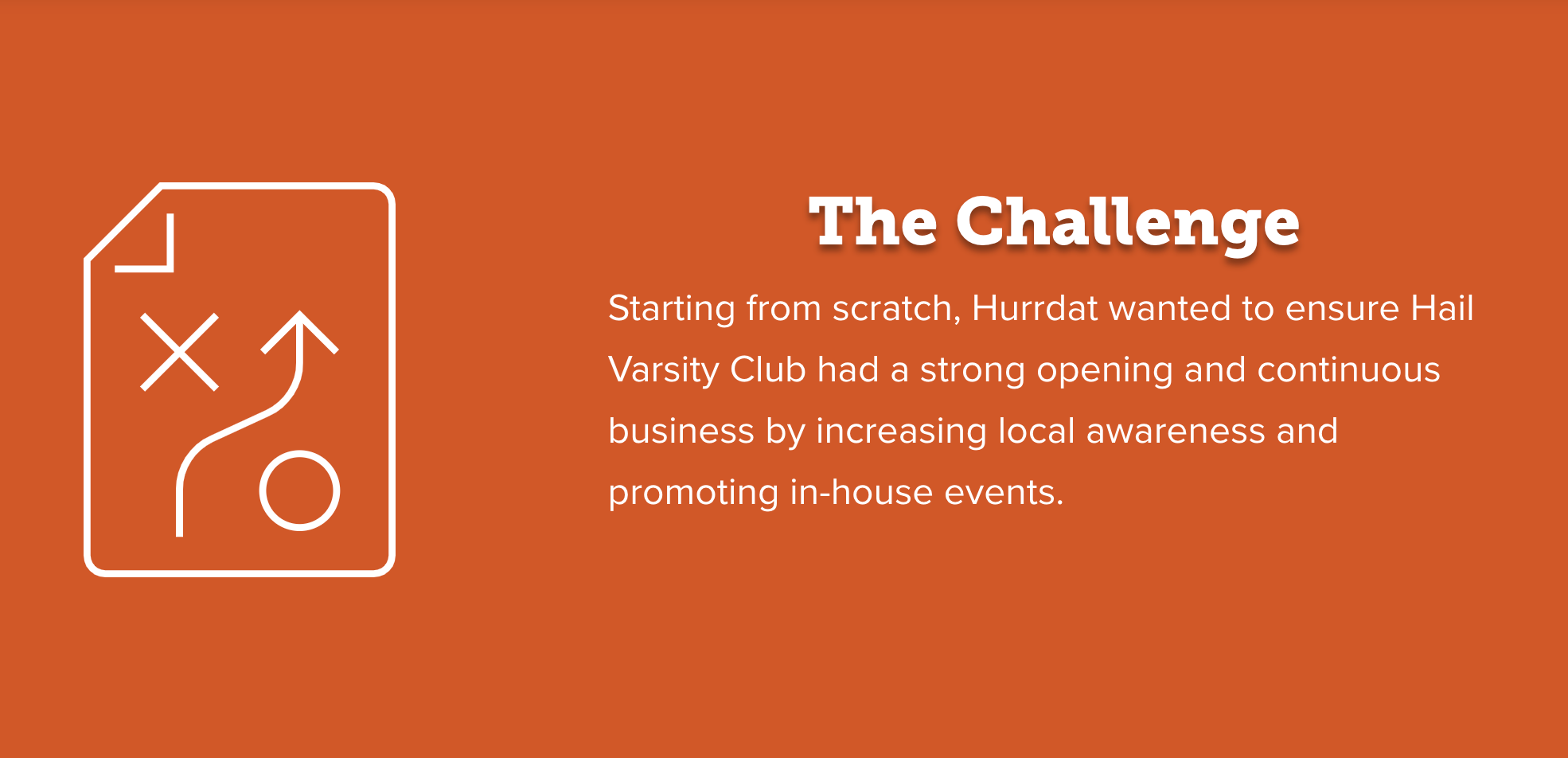
Once you know generally what you want customers to do, make this plan more concrete by drafting SMART goals. Here’s an example of a Specific, Measurable, Actionable, Relevant, and Time-Bound (SMART) goal looks like for a small business starting to advertise online: “We will increase our monthly website traffic to over 1,000 visitors in six months’ time by adding at least one optimized website page or blog post per month.”
Pro Tip: For many businesses posting content at least once a month, you should aim for over 1,000 monthly website visitors about 3-6 months after you start your content marketing strategy. If you’re not seeing those results by then, it’s time to reconsider your target keywords and types of content.
Identify Your Audience
Your messaging won’t resonate with your ideal buyer if you don’t first identify who they are. Start by breaking your target audience down into customer profiles, also known as buyer personas.
Hurrdat Sports Bar & Grill identified one of their main buyer personas as families in the La Vista area near the restaurant. Here’s how they target this audience.
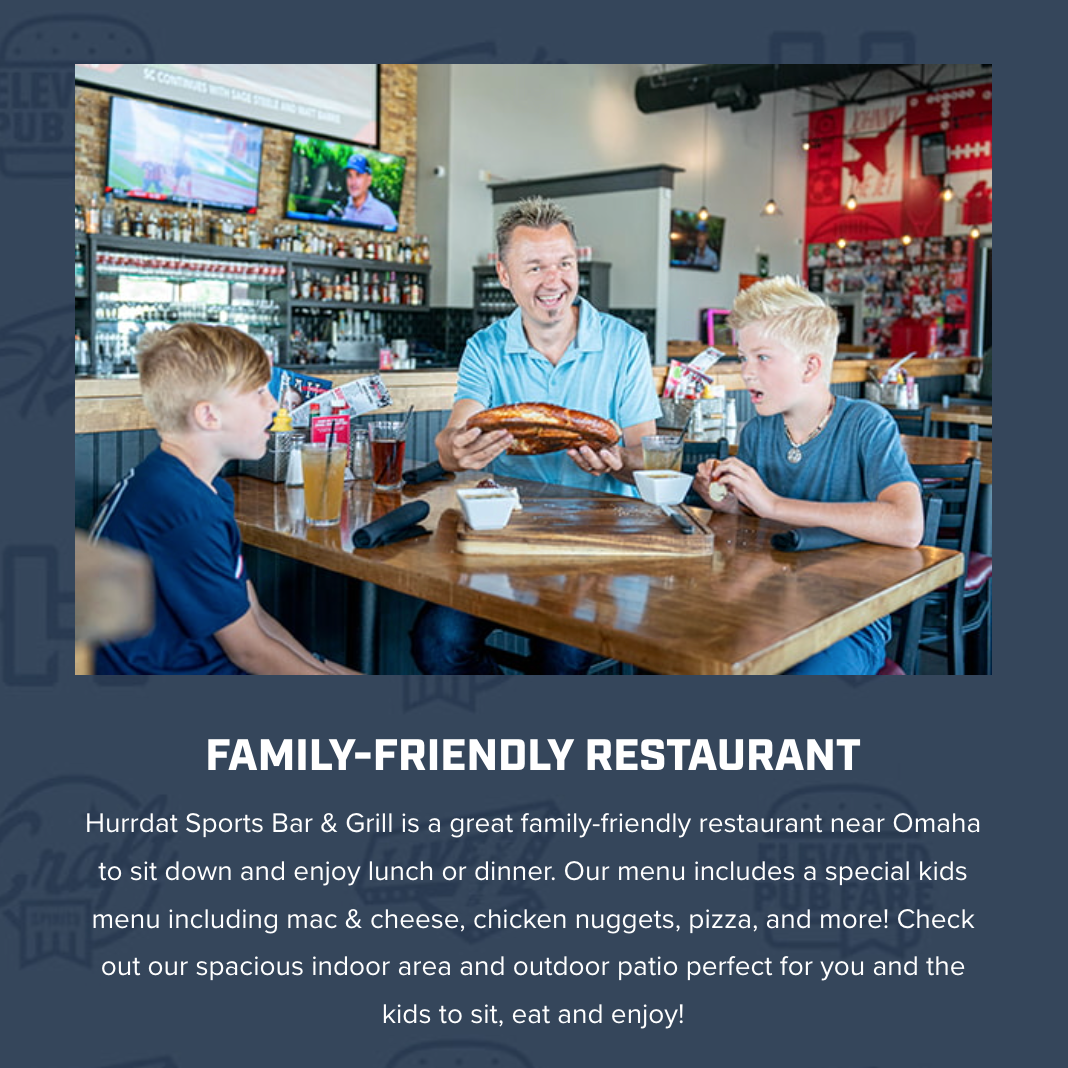
Use a free buyer persona template to create different customer profiles based on your current audience. You’ll want to understand each profile’s demographics (age, race, ethnicity, gender, income level, and employment status), psychographics (values, goals, and interests), and buying habits.
If you’re just starting out, don’t stretch yourself too thin by making too many buyer personas. Just start with the customers you attract currently, and only once you’ve covered this primary group should you look to secondary groups or shaping an ideal customer.
Choose the Right Marketing Channels
Based on your buyer personas, you can get an idea of which platforms will reach your audience best. Since you likely have limited resources, you can’t afford to try every single marketing channel, so this is an essential step to maximizing your small business marketing plan. Here are some of the most common marketing channels that customers use to find your business:
- Local Listings
- Business Website
- Social Media
- Blog Posts
- News Outlets
- Paid Ads
In the case of Hurrdat Sports Bar & Grill, a great website optimized for local search was essential for marketing to the surrounding community and building awareness and reputation by appearing in organic search results.
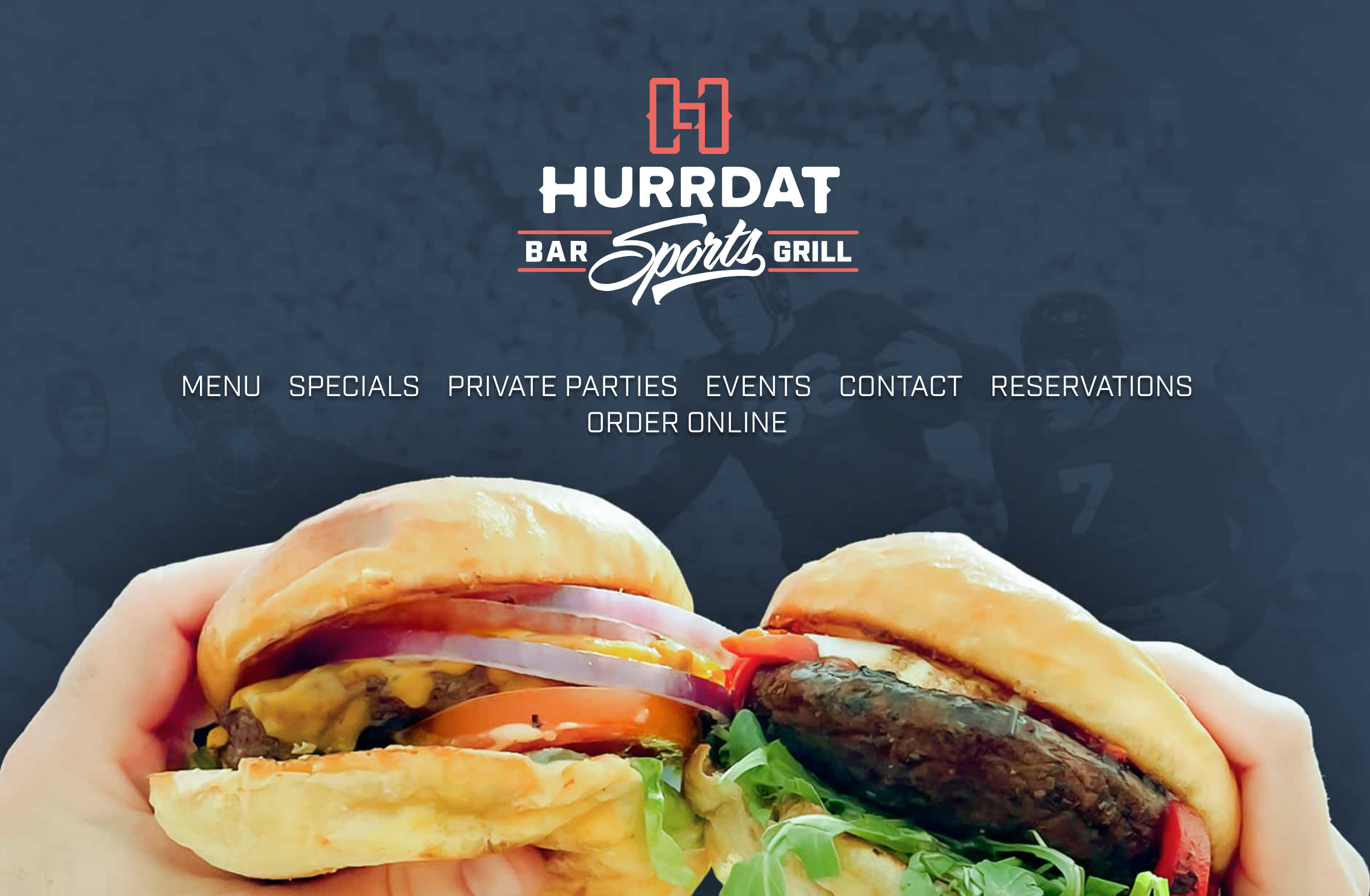
Local business listings–specifically Google Business Profile–were also used to boost the restaurant’s appearance in local search results and send traffic to the website. The sports bar used Posts in Google Business Profile to promote upcoming events.
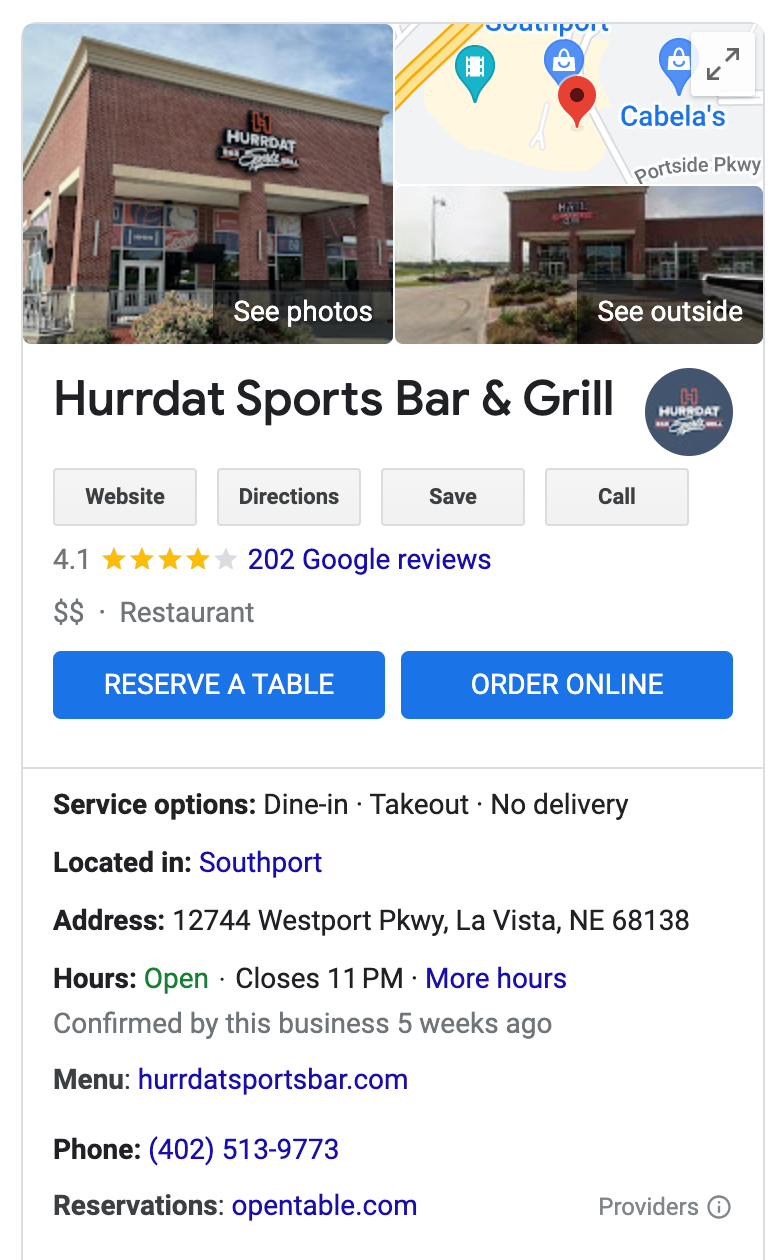
Decide Your Marketing Budget
There isn’t a “correct” small business marketing budget. You just want to make sure you’re seeing a healthy return on investment. Generally, small businesses spend 3% to 5% of their gross revenue on marketing, mid-sized businesses start with 10%, and large businesses start with 15%. However, this varies by industry—manufacturing (2%) and construction (3%) invested the least, while consumer services (19%) invested the most.
While your marketing strategy will vary based on your audience and objectives, many small businesses start by investing their budget into high ROI services like local SEO and their website. As your budget increases, you should keep these fundamentals and consider more competitive digital spaces. Here’s a general breakdown:
- < $1,000: Local SEO (especially Google Business Profile), Social Media Marketing, Website Copywriting
- $1,000 – $5,000: Above Services + Website Design, SEO, Email Marketing
- $5,000+: Above Services + Content Marketing, Pay-per-click (PPC) Advertising
Your small business needs a consistent brand identity if you want your customers to quickly recognize your company. To build a brand on a budget, you’ll need to determine:
- Brand visuals (fonts, colors, logos, and icons)
- Brand language (tone, voice, and value proposition)
- Brand story (the problem and how you’re the solution)
Hurrdat Sports Bar & Grill designed an effective brand logo with a specific color palette that’s consistently used on every page of the website. The fonts used across the website in headers and body text are consistent as well.
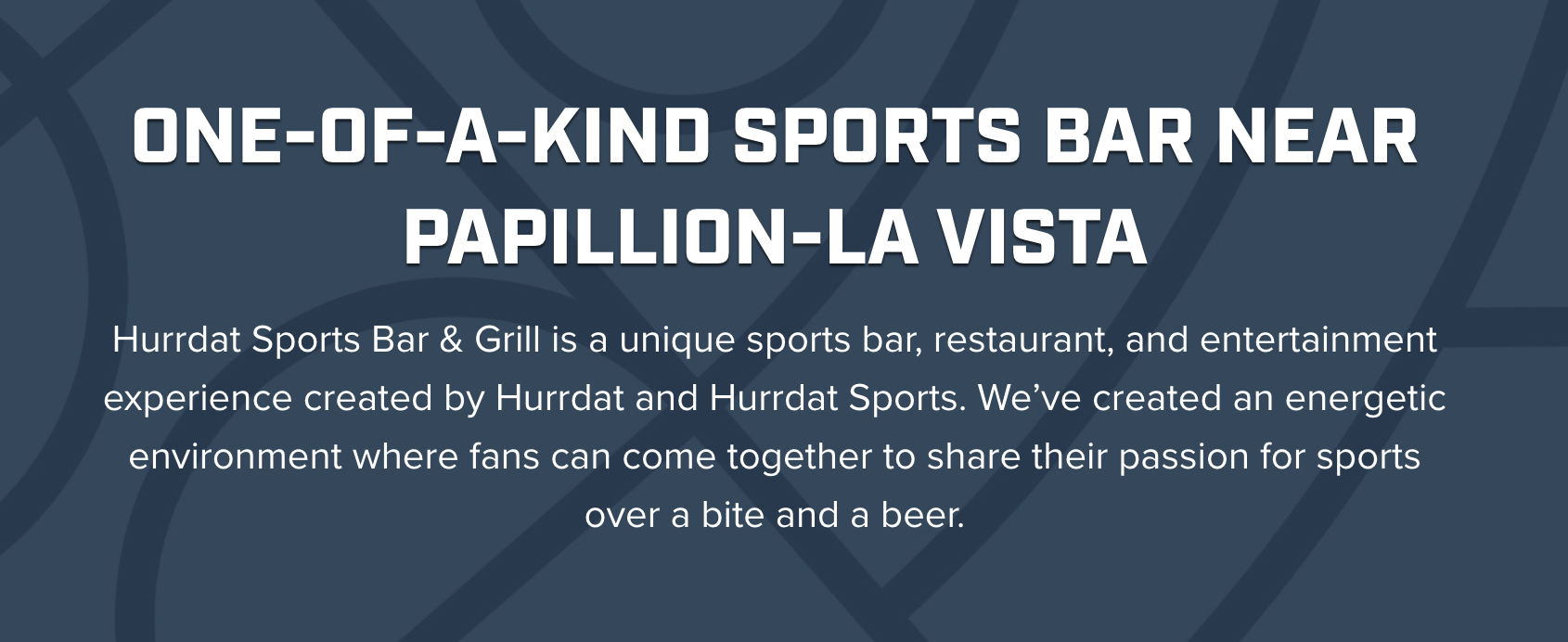
On the brand’s About Us page, the focus of being a locally owned, family-friendly, and lively sports bar and entertainment space invokes a sense of community for sports fans who want a place to enjoy game days with others.
Your small business branding strategy could be inspired by the way you’ve designed your physical store or by what works best with the marketing channels you plan to use. Our favorite free and paid branding tools for making brand assets and a brand style guide are:
Claim & Set Up Local Business Listings
93% of customers are frustrated by incorrect or inconsistent business information online. Claiming your business on Google Business Profile, Apple Business Connect, Yelp, and other local citations platforms is the only way to control your digital footprint and improve that customer experience. Plus, it’s completely free.
In addition to Google Business Profile, Hurrdat Sports Bar & Grill claimed and updated their Yelp business listing with accurate information. The information matches Google Business Profile, including updates on coming live events.
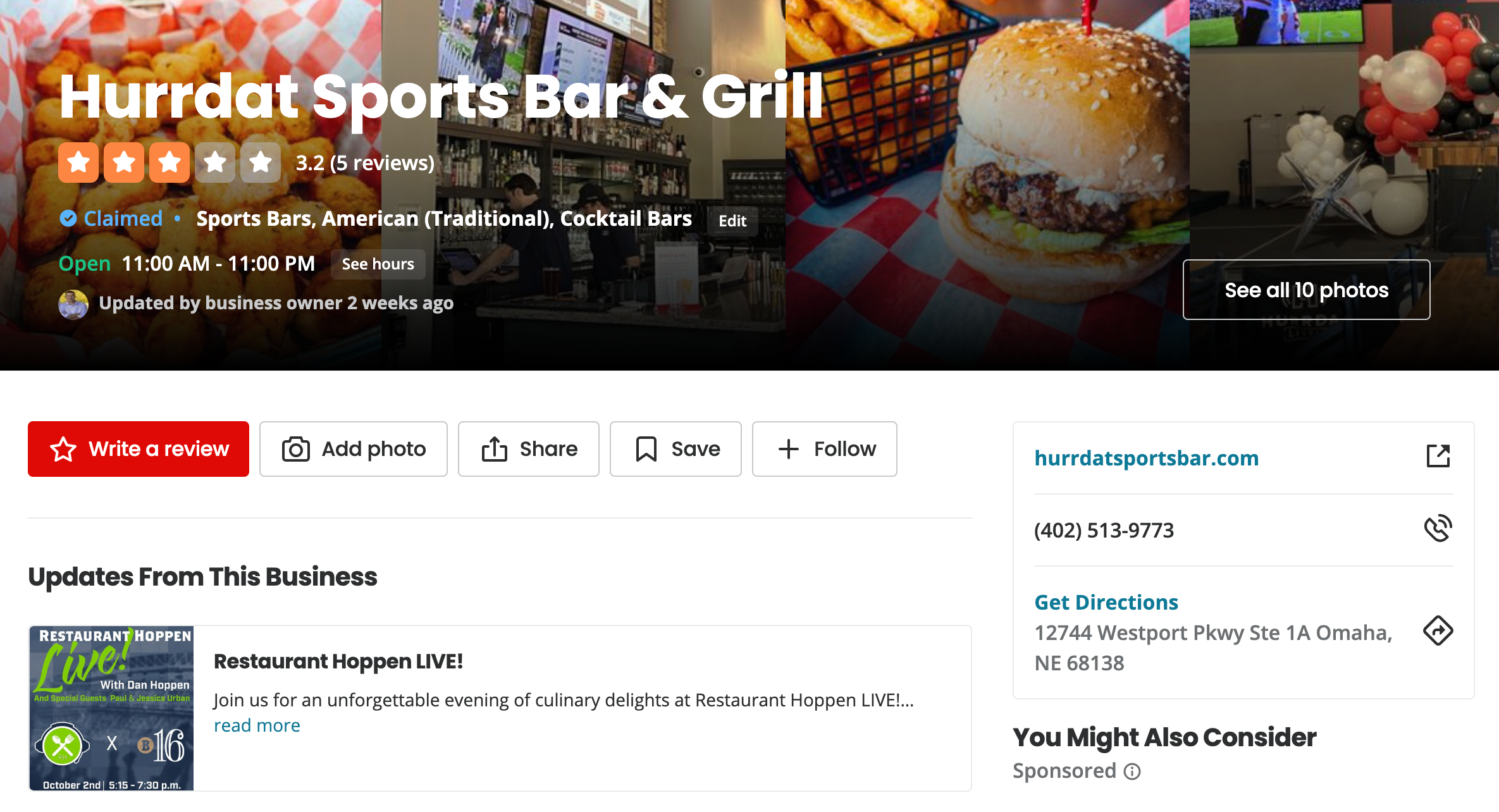
Wondering how to change your phone number or address on Google Business Profile? Or want help choosing the best business categories for your local listing? Check out our Google Business Profile Optimization Tips or see how your citations are performing with our Free Business Listing Checker.
Leverage Social Media
There are many ways social media can help small businesses, like building brand awareness, improving local visibility, and giving you an outlet to better understand your competitors and customers. Don’t spread yourself too thin by posting everywhere, just choose one or two social media platforms that your customer base uses frequently. Then, create consistent, high-quality content for that platform to get people to take your desired action, whether that’s linking landing pages in your caption or bio to increase website traffic or hosting contests and giveaways to grow your engagement and follower count.
Since Hurrdat Sports Bar & Grill is a restaurant, high-quality visuals were a priority to draw people in. So, Facebook and Instagram were great platforms to create accounts where high-quality photos and videos could shine.
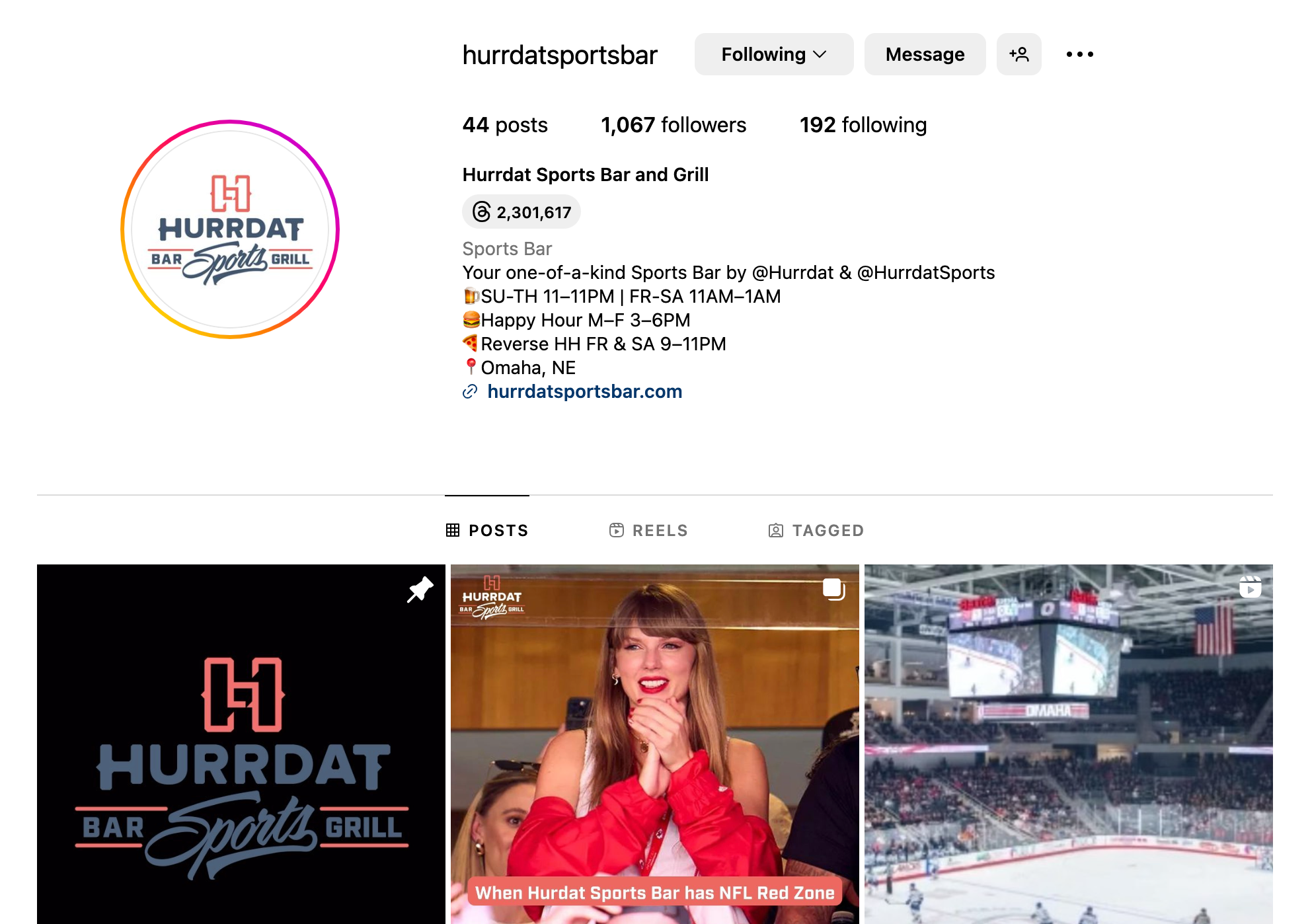
Build a Website
Your small business needs a website because it’s the home for your brand and a great destination to send customers who want to know more about your business after seeing your marketing materials. Search engine optimized webpages also give you more opportunities to appear in Google results and, therefore, get in front of more potential customers. People even trust a business more if it has an operational website.
Just be sure to optimize your website for local search and mobile devices. And if your main goal is to increase website traffic, you might consider starting a blog, writing location pages, or using your other marketing channels to drive users to your site.
As we’ve mentioned, Hurrdat Sports Bar & Grill had great local search optimization, but the website is also optimized for mobile. Knowing that restaurants receive most traffic from mobile devices, this was a strategic move to cater to customers searching on phones or tablets on the go.
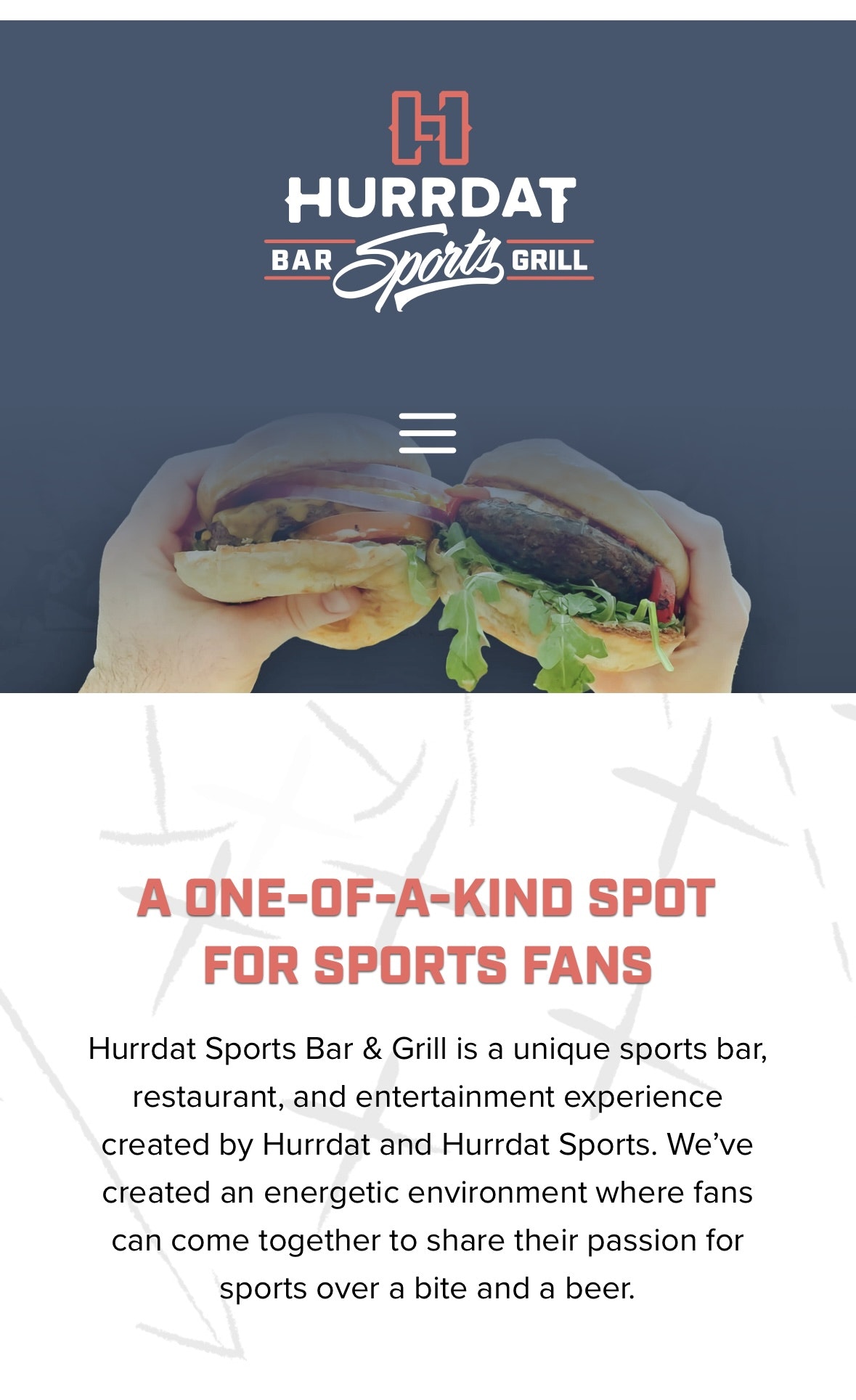
Remember Traditional Marketing
Yes, almost everyone in the world is online, but that doesn’t mean traditional marketing is dead. In fact, many customer-facing small businesses plan to focus more on traditional marketing in the next few years. Part of the reason this type of marketing is effective is because it’s a refreshing change from digital advertising–many customers block or skip online ads, finding them to be annoying or distracting. Sending out effective print ads in the mail or through the paper, as well as billboards and radio ads, can be just as effective as digital ads. Restaurants and many other small businesses can also look into traditional marketing tactics like vehicle wraps, local events, and sponsorships to get their name out there.
Grow Your Email List
With a ROI of $36 for every dollar spent, email marketing is incredibly cost effective, and since most email marketing platforms come with targeting capabilities, it’s a great way to make customers feel seen and appreciated with personalized content.
Another reason why email marketing is worth your time is because your customers come to you. Unlike paid ads and promoted social media posts that people aren’t asking to see, this unique marketing channel lets people opt into your content. So, you know that you’re delivering to high-quality followers who are actually interested in your product or service and brand.
Consider Paid Advertising
Paid advertising, like pay-per-click (PPC) ads, can be a powerful tool in your online marketing arsenal, but it’s step better suited for those who have some experience in digital marketing. So, once you’re more comfortable online, you might supplement your organic marketing strategy with a few paid advertising solutions to see faster results.
PPC involves paying for each click your ad gets, so it’s important to set a budget and choose keywords wisely. Research your target audience and competitors to make your ad stand out. Then, regularly monitor and adjust your campaign to maximize results.
Scale Your Marketing
To reach more customers and grow your business over time, you’ll eventually need to ramp up the number and frequency of your marketing materials. To avoid overworking yourself and your staff, you might use AI in your business with automation solutions for scheduling social media posts, emails, and replies to reviews. Or outsource to a local business-minded agency that specializes in small business marketing when your content calendar becomes too much to handle alone.
Track Your Success
It’s finally time to see what you’ve accomplished, using top reporting platforms for websites, local listings, social media, email and paid campaigns, and more. Your marketing goals will determine which KPIs to track, but here are some starter metrics to consider:
- Conversion Rate: Percentage of customers who performed a desired action, such as click through your website, make a purchase, book a consultation, or sign up for emails. Divide number of conversions by website traffic and multiply by 100.
- Customer Acquisition Cost (CAC): Amount you spent on a customer before they made a purchase. Divide the budget allocated to marketing channel by number of new customer earned on the channel to calculate CAC.
- Search Engine Rankings: Number of search intents your business website or blog posts rank for in SERPs (Search Engine Results Pages). Use a SERP ranking tool like Google Search Console.
- Social Media Engagement: Number of likes, comments, shares, and other interactions your audience has with your content. Most social media platforms have analytics for engagement built into the platform, and you can view post-specific engagement.
- Subscribe/Unsubscribe Rates: Percentage of people who subscribed or unsubscribed from your email newsletter. Use an email marketing platform like MailChimp.
- Website Traffic: Total number of visitors on your website from different channels. Use an analytics tool like Google Analytics.

As for Hurrdat Sports Bar & Grill, the first five months of Google Business Profile activity brought in over 350,000 impressions in organic and local search. The business website had over 10,000 visits. This, coupled with a completely staffed pre-opening event, gave Hurrdat Sports Bar & Grill some early success.
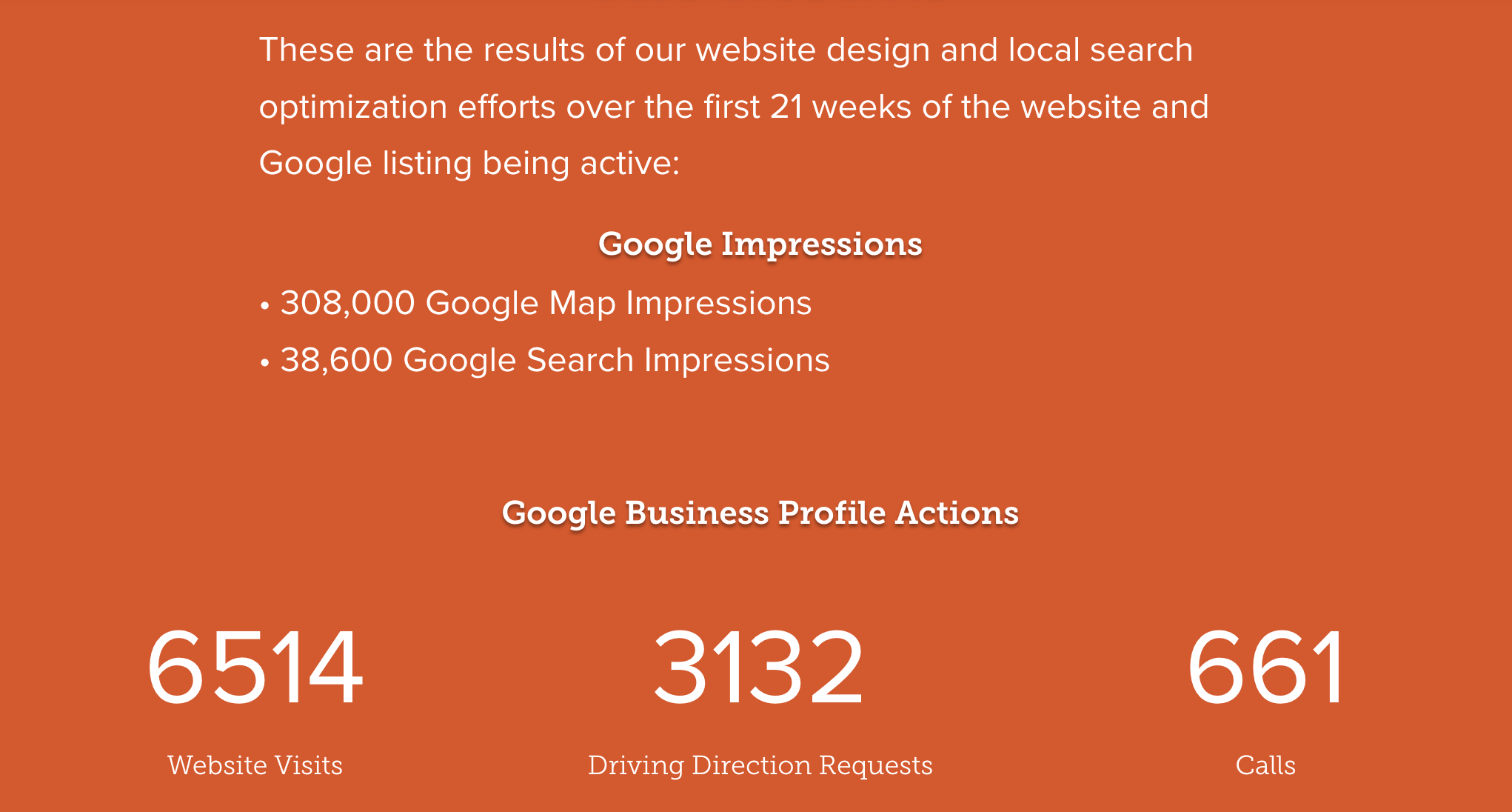
Need help getting into marketing strategies for small business? Local Search Fuel by Hurrdat has affordable local SEO services and other local search starter deals to start you on the path to getting found by more customers and growing your business. Get started today!

Stefanie Vanderbeek
Stefanie Vanderbeek is a content strategist and writer who specializes in long-form digital content and website SEO optimization. Stefanie earned her Bachelor of Journalism from the University of Nebraska-Lincoln in Advertising and Public Relations in 2021. In her free time, you can find Stefanie reading, deep diving into video game lore, singing in her professional vocal group, or traveling the world!

